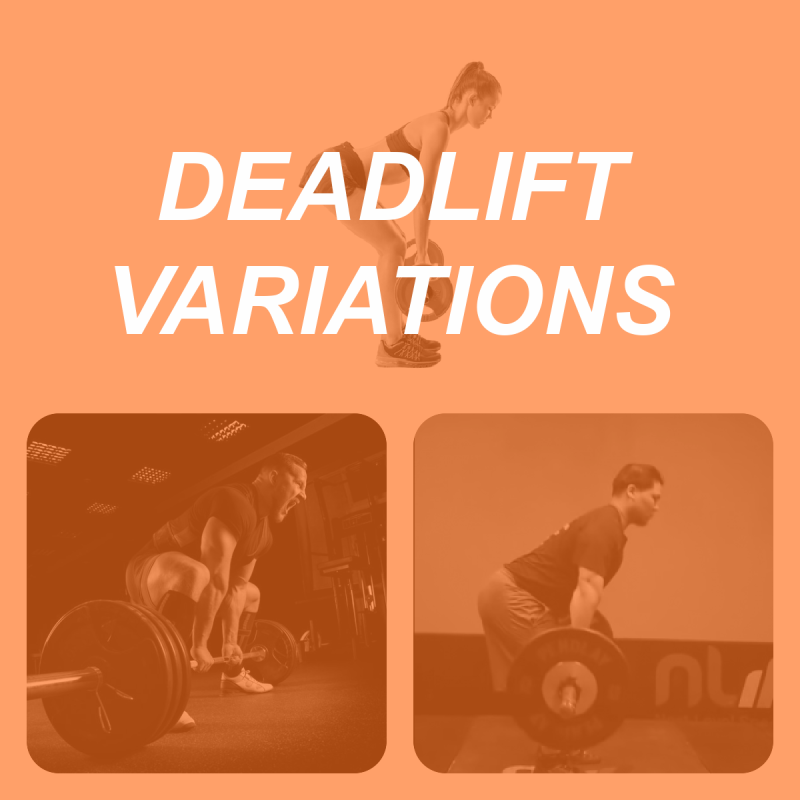
For however ubiquitous the deadlift is as a foundation strength movement, the many variations associated with it can understandably lead to some confusion and conflation.
What’s the difference between a conventional barbell deadift and a Romanian deadlift? Are Romanian deadlifts the same as stiff-legged deadlifts? Why would you do a trap bar or a sumo deadlift? Are you supposed to set the bar up on a rack or lift from the floor? (Okay, that’s not a variation question, but a valid technique question!)
Let’s straighten this big ol’ mess out once and for all. Here is your primer for all things deadlift:
Conventional Deadlift
The grandaddy of true strength movements, the conventional deadlift involves lifting a loaded barbell off the ground by hinging at the hip, bending at the knees, and keeping the spine strong and neutral. This lift is intended to build strength so staying in a 1-6 rep range should be the goal. This is a concentric lift. The intention is to control the weight off the floor carefully and either drop it or bring it quickly back to the ground so as to not tax the eccentric loading on the back and hamstrings.
Variations
Using a shrug bar, or trap bar, to perform a deadlift will spare the spine added stress. This is helpful for anyone suffering from low-back pain or dysfunction.
Dumbbells and kettlebells are kosher especially for beginners. Still work your client in a 1-6 rep range but aiming for a 50-60% of their 1RM will help them perfect form while building strength, especially in the upper back which will notoriously cave under the weight of a 1RM before the hips and hammies do.
Snatch-grips are wide grips that will emphasize the traps and also increase the range of motion of the deadlift. Use lighter weight.
Sumo Deadlift
The Sumo deadlift as the name suggests requires standing in a wide stance with turned out toes. Why would someone want to perform it this way? The wider stance reduces the range of motion, often allowing a heavier lift, but this doesn’t apply to every body. It also shifts the tension more to the vastus lateralis, vastus medialis, and adductors, and somewhat more to the glutes than the hamstrings. Most notably, the shear forces on the lumbar spine are lower with a Sumo, allowing those with low back issues to adapt this style more easily.
Different hip structures dictate who may respond better to a Sumo position versus conventional. Try both and see which works best.
Stiff-Legged Deadlift
Not to be confused with the Romanian deadlift, this movement is intended to emphasize the hamstrings more than conventional deadlift by keeping the knees in more extension during the movement. Do not totally lock out the knees, but allow them to stay soft. Do not attempt to move the same weight as a conventional deadlift; the stiff-legged variation puts much more stress on the hamstrings and careful attention should be paid to flexibility in this area. Any limited flexibility in this area should be addressed and weight kept light, otherwise DOMS will be far too painful.
Variations
Those who perform these purposefully might be doing so with the intention of emphasizing the lumbar spinal erectors above all else. Returing a barbell to the ground with even great flexibility in the hamstrings and a slight bend in the knee will involve some lumbar flexion. Which means some extension is required to return to standing and those muscles have much more demand placed on them than when kept neutral.
Romanian Deadlift
Many folks think they are performing Romanian deadlifts when they are performing stiff-legged ones, and vice versa. They are indeed quite similar and easy to confuse. The difference is that the range of motion of the Romanian deadlift is intended to stop at the shins. Weight is also kept lighter as in stiff-legged, but because the weight is kept in the air the tension on the hamstrings is constant. This is great for those looking to hypertrophy their hamstrings. In contrast to conventional deadlifts, this version is intended to focus on the eccentric portion of the movement.
The recommendation is to start the lift from a rack at hip height and then focus on slowly lowering the weight towards the shins. If you don’t have a rack, your first lift up from the floor should be in a conventional deadlift form.
Variations
Single-leg RDLs are a popular choice for fitness clients. You get balance, stability, and hypertrophy all in one. A Kickstand RDL is a regression for the full-blown single-leg version, allowing time to master the movement before the balance portion.
Deficit RDLs are ambitious, increased ROM movements, that would be the equivalent of a stiff-legged deadlift with no floor beneath you. So you elevated yourself onto a platform so that rather than stopping at your shins, you lower the barbell even further, increasing the tension on the hamstrings even more.
Deadlifts of all kinds are a fantastic exercise that can tremendously increase overall strength and muscle development. Don’t leave them out if you are encountering difficulties. Refine technique first with a hip hinge and try a new variation if difficulty or discomfort is encountered.







